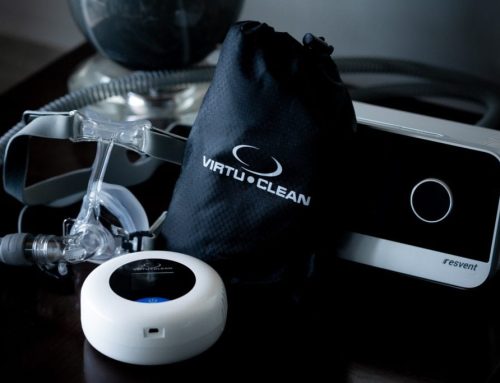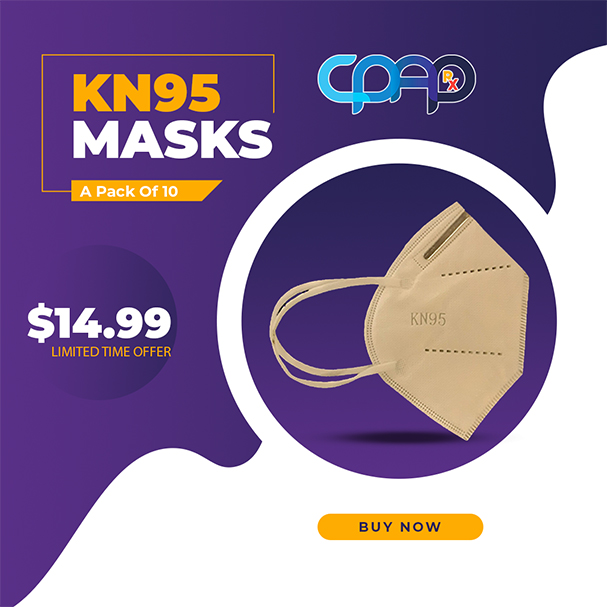Sleep apnea is a common disorder in America. Unfortunately, many people don’t follow through with their treatment because they find the older CPAP masks uncomfortable and are unable to sleep. Luckily, there are now many more options for sleep apnea treatment. It is just a matter of spreading the word so that people don’t continue to go untreated.
The following are some options that are currently available to sleep apnea sufferers:
PAP Devices
Positive Airway Pressure Devices are the most common treatment for sleep apnea. These devices treat moderate to severe cases. The patient wears a mask that fits snugly overtop of the nose, or sometimes the mouth and nose during sleep. The mask supplies a flow of pressurized air either continuously (CPAP) or intermittently (BiPAP, VPAP, and PAP). Studies prove that patients who use their sleep apnea devices regularly feel better and deal with fewer complications of the condition.
Oral Appliances
Oral appliances are increasing in popularity for treating sleep apnea. These devices are relatively new to treating sleep apnea, but they are recognized as an effective treatment option for many sleep disorder sufferers. The patient wears the oral appliance in the mouth during sleep and is similar to a mouth guard or orthodontic appliance. For sleep apnea, it works by holding the jaw forward enough to keep the airway open. It also prevents the tongue and upper airway muscles from collapsing.
For mild to moderate sleep apnea cases, oral appliances are a first-line treatment option recommended by the American Academy of Sleep Medicine AASM . Oral appliances are also approved for patients with severe sleep apnea but are unable to wear CPAP devices. Oral appliances can also be used together with a CPAP machine to make treatment more comfortable.
Upper Airway Stimulation Therapy
There is a new therapy available called Upper Airway Stimulation (UAS) that is clinically proven for patients with moderate to severe sleep apnea who cannot use CPAP. This therapy uses a generator, sensor, and stimulation lead to record and monitor your breathing patterns during sleep. The generator and stimulation lead deliver mild stimulation to your airway muscles to keep the airway open.
Abstinence from Alcohol
Alcohol disrupts the regular sleep pattern and rhythm. It also relaxes your muscles, which is dangerous when your airway is susceptible to collapse. Furthermore, alcohol makes it more difficult for your body to wake itself up during an apnea episode.

Weight Loss
Obesity is a common factor among patients with sleep apnea. The excess weight around the neck puts pressure on the airway muscles resulting in their collapse. Weight loss leads to fewer incidents of apnea and hypopnea during sleep.
Nasal Decongestant
In mild cases of sleep apnea, nasal decongestants are sometimes a useful treatment option. Positional therapy is also effective for mild cases. Some patients only have apnea episodes while they sleep on their back, learning to sleep on their side can essentially cure the condition.
Surgery
Sometimes a surgeon can determine which part of the airway is obstructing airflow. There are multiple types of operations used for treating sleep apnea depending on where the airway obstruction exists. The success rates for this type of surgery is about 50%.
Get the Most Out of Your Sleep Apnea Treatment
 If you are prescribed any kind of sleep apnea device, it is essential to keep it clean. These devices are crucial pieces of medical equipment that carry bacteria and germs that can make you very sick if they are not taken care of properly. A CPAP cleaner such as VirtuCLEAN is an easy way to ensure that your sleep apnea equipment stays clean and safe to use. This CPAP cleaning device can be used to clean any type of CPAP equipment. It uses ozone to clean and disinfect without using any liquids. To learn more about VirtuCLEAN and how it works visit our website.
If you are prescribed any kind of sleep apnea device, it is essential to keep it clean. These devices are crucial pieces of medical equipment that carry bacteria and germs that can make you very sick if they are not taken care of properly. A CPAP cleaner such as VirtuCLEAN is an easy way to ensure that your sleep apnea equipment stays clean and safe to use. This CPAP cleaning device can be used to clean any type of CPAP equipment. It uses ozone to clean and disinfect without using any liquids. To learn more about VirtuCLEAN and how it works visit our website.



 Shop
Shop



